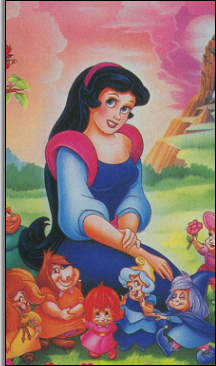QUAKE III Arena Original In-Game Bugwall Artwork
I love art. I love going into museums and galleries and just being surrounded by paintings. I also love video games. I laugh at the debate on whether video games are art since there is no denying that games are entirely composed of it: conceptual, storyboarding, character design, environmental.
Around four or five years ago, I set out to bring my two loves together and find a piece of original video game artwork. It was not an easy task. I reached out to many artists from several different companies. Although a couple of these people were nice enough to share some stories before turning me away, others were not as kind and told me flat out that their art is owned by their respective employers and cannot be given away or sold.
I was close to quitting my quest until I happened upon the website of illustrator and game designer Jennell Jaquays (formerly Paul Jaquays).
Jaquays started out in the gaming industry during the days of the ColecoVision, moving up as Director of Game Design at Coleco’s Electronic Development Group. She freelanced for companies like Epyx, Interplay, and Electronic Arts on role-playing adventures and illustrated covers for TSR, Inc. of Dungeons & Dragons fame.
Prominent DOOM, DOOM II, and QUAKE level designer Sandy Petersen brought Jaquays on board to id Software, where she designed the Cerberon Palace City single-player levels for QUAKE II (as well as the Lost Station secret area) and wrote the instruction manual’s detailed backstory.
After I contacted her, she told me that she had kept one piece of her gothic-inspired QUAKE III sketches and was willing to let go of it.
This was my first up-close look into how games were made on a fundamentally artistic level.
Accomplished in airbrush, ink, pencil, and gouache, the 5″ x 5″ drawing was subsequently scanned and modified in Photoshop to become a door/wall texture in the computer game.
The appropriately-nicknamed “Bugwall” can be seen in a number of different maps, including Brimstone Alley (Q3DM8), Troubled Waters (Q3CTF2), and Deva Station (Q3DM11).
Art such as this would have normally been only half-painted and then mirrored in the game, but I am glad that was not done in this example as it would not have displayed as well.
The smallish illustration may not be a particularly important piece by any stretch, but it is special knowing that this represents something larger. It is literally a building block of game-making.
I wonder if an art market will someday form out of video games, and if museums will ever house them.
Jaquays left id during the making of Doom 3 to join the prototyping and art teams at Microsoft’s Ensemble Studios, working on Age of Empires III and Halo Wars until the company was disbanded in 2009.
She returned to level design at CCP Games on the World of Darkness MMORPG before parting ways to co-found the game development company Olde Sküül with her wife, fellow gaming industry pioneer Rebecca Heineman.










